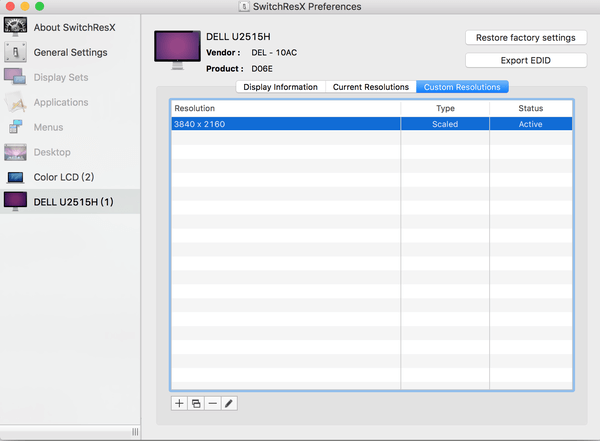
Googling for problems with external monitors on MacBooks found dozens of threads on official and unofficial Apple forums, all full of people with the same problem. The most common response was to blame the monitor, despite assurances from the stricken users that the monitor worked beautifully in Linux and Windows, even on the same machine under Boot Camp. “You just haven’t calibrated it!”, “You are just too used to Retina now!”, “You just need to buy a Thunderbolt display!” Apple people also like to solve problems by throwing more money at it. (I realise that owning a Mac makes me an Apple person, too. My lucky break was reading that the current colour space was “YCbCr” when I was browsing the monitor’s settings menu. I was sure that it was using RGB when hooked up to my PC, so I started searching instead for forcing RGB mode in OS X. It didn’t appear to be available out-of-the-box, but I have had some experience in overriding EDID settings for similar purposes so I searched instead for that. Your thread and script was incredibly helpful and informative. It was written to fix problems connecting an external monitor via DisplayPort, but it fixed my HDMI issue just the same. I’ve summarised the required steps below.

My last word is to wonder what Apple is playing at.
#Switchresx sierra how to
Switchresx mojave how to#ĭo they just not care about those using third-party components, or are they actively attempting to force people on to Thunderbolt displays? How to force RGB in Mac OS X It seems that this problem has been reported by a lot of people for a long time, and I expect it would require a fairly simple software update. These steps have been updated for Mac OS version 10.11, “El Capitan”.

See below for differences for previous versions of the system.


 0 kommentar(er)
0 kommentar(er)
